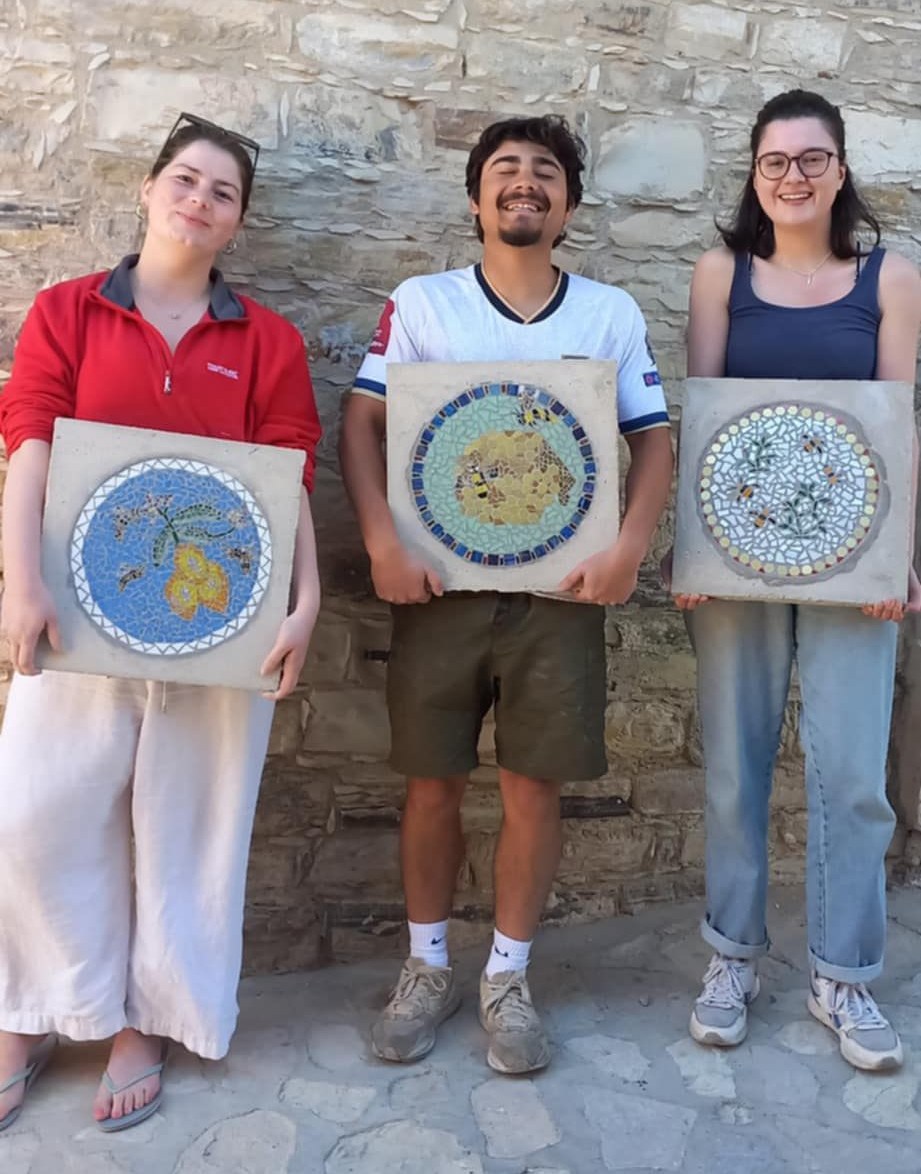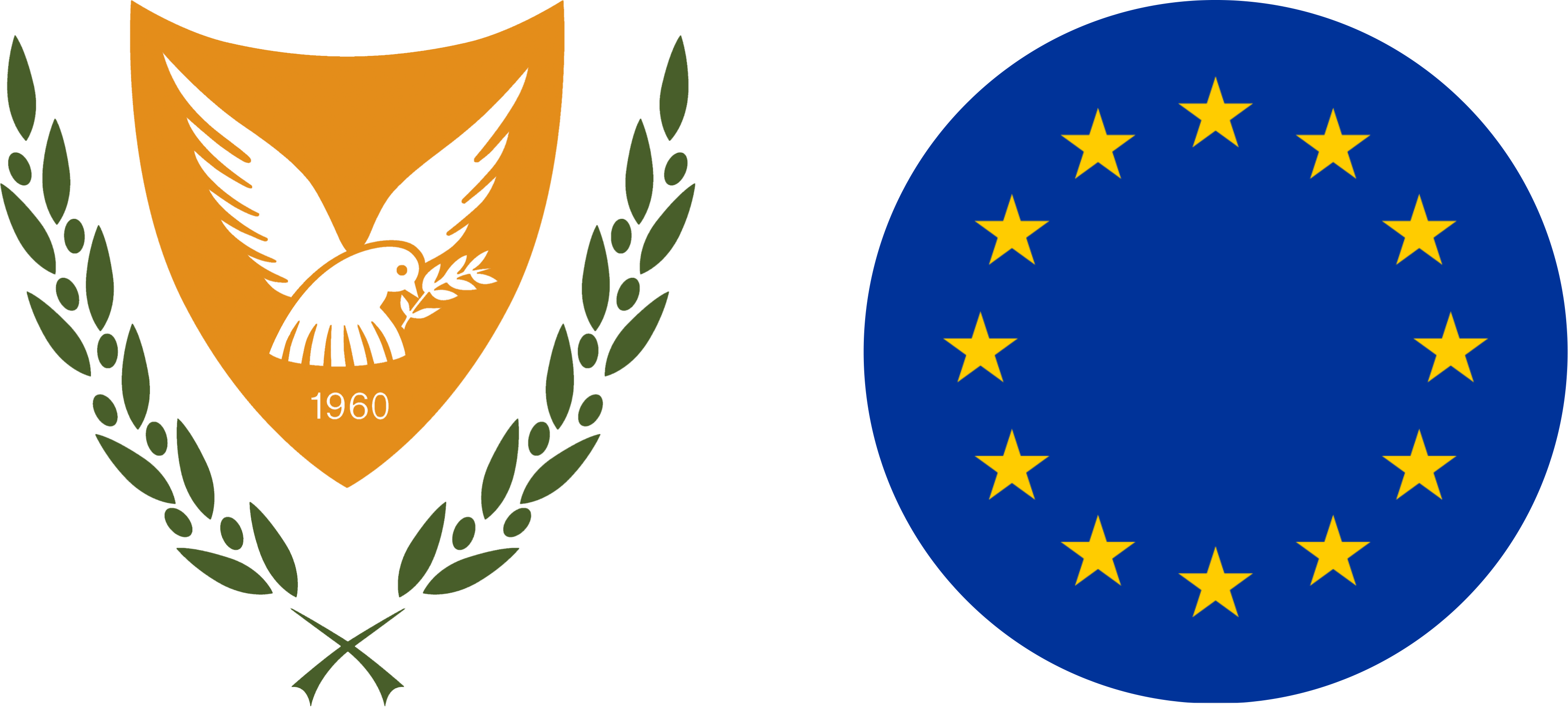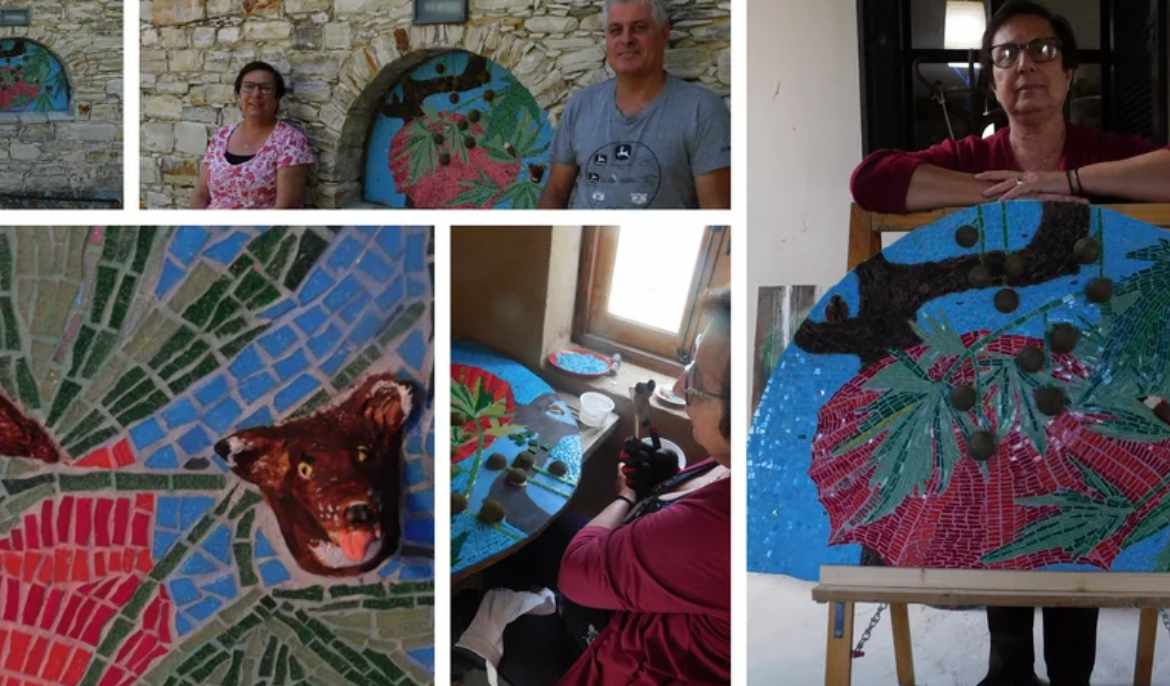By Martin Clark
Some people think of mosaic making as a craft but really good mosaicists can introduce perspective, depth of field, movement and ‘life’ into mosaic.
Of course, in Cyprus, that’s been happening since the Mycenaean Greeks settled on the island 4,000 years ago and was at its height in the Roman and then Byzantine periods. The mosaics at Paphos, Kourion, Salamis and Soli are known all over the world and I really love the Roman ‘Leda and the Swan’ at Koukklia.
Even in those long ago times, mosaic used a lot of local and natural materials, so was sustainable even then. The Ancient Greeks used black and white pebbles and the Romans were delighted by the rock colours in Cyprus and cherished the hard (green) “terra verdae” stone, making mosaic tesserae out of it. They brought a bright red from Egypt, called ‘Porphyry’.
Many members of our team worked before with famous and sadly missed Cypriot artist, Stas Paraskos, whose influence I have mentioned before in the pages of the Cyprus Mail. Stas was a great teacher and champion of using waste in art and his mosaics in the Lemba Wall near Paphos were ground-breaking.
In modern day Cyprus mosaic continues and in the mountainous area of Larnaca district, in Kato Drys and Pano Lefkara, our ‘Green Village’ partnership likes to make mosaic art, which is even more sustainable. It all began over 10 years ago when we found thrown away concrete flooring slabs on the beach by Paphos airport. At some time in the past, heavy builders waste had been used to help stabilise the shoreline and reduce erosion; many years later the slabs were strewn along the beach.
What first attracted my attention was the round indented ‘frog’ on the underside of the slab, which holds the cement and creates a suction pad when laying the slabs. I thought, “this is ideal for holding mosaics”.
Now our mosaic work, led by Panayiota Demetriou, can be seen in many villages in Larnaca district and has attracted the support of Larnaca Tourism Board. Right now, we are creating a series of mosaics featuring bees and they will be displayed in Kato Drys, Kato Lefkara, Layia, Melini, Odou, Ora, Vavla, Vavatsinia and Agioi Vavatsinias.

Immy, Shahid and Saoirse with their bee mosaics, destined for the Honey Villages, made with support from Larnaka Tourist Board
Even more modern, contemporary and environmentally sustainable are mosaics made from snipped up beer and soft drinks cans. One of them is on a heavy plastic ‘bleacher’ from a redundant skateboard park, Hashini, the artist, created a wonderful traditional ‘Lefkara Lace’ pattern, complete with eight-pointed stars (‘margarites’ in Greek), which represented the Roman Goddess of Love, Venus.
We got some really great ideas from Katy Galbraith, a Scottish master mosaicist, who visited us here in Cyprus. Katy helps us design and create a sci-fi style tree, made entirely from broken crockery, beads, bark and pieces of shiny metal smelting slag. Pods made from plastic bottles stuffed with non-recyclable waste and covered with all manner of discarded objects, hang from the branches and make me think of Isaac Asimov novels. The tree is displayed inside the Old Olive Mill – Mola Culture Factory and is intended to give a strong environmental message about doing more recycling and re-using of materials.
One mosaic of “engineered fish” is called ‘Savage Future’ and using lots of waste materials; an accompanying poem predicts a dire future of climate change and polluted oceans. The cultural and creative industries are perfect for raising awareness about the need to be less wasteful. Recycling, re-using and upcycling in art are becoming more and more popular and the ’Green Villages’ of Lefkara and Kato Drys are leading the field, with much needed support from the community councils and Larnaca Tourist Board.
Savage Future
Last night I dreamed a strange savage future
The world had warmed and most had died
We lived with camels that lived on spiny cacti
Whilst we ate dates, goats and salty cheese
The land is seared and burned so we must swim
A fetid ocean that teemed with fish in my youth
Now only dreadful, Godless creatures live there
Bred by scientists to gobble up our awful waste
With good but flawed intent they created new life
Mindless of sowed seeds of dreadful doom
Swapping genes and installing gleaming chips
Gobbling fuel in their great whirring machines
These engineered fish now are feral, escaped
Uncontrolled they eat metal and glass and oil
Mimicking beauty with patterned shining flesh
They flash into the bay cutting water with a whine
Boiled and limpid under the burning noon sun
We must swim there, to escape the fizzing heat
Gambling their lives some shrieking feed the fish
They eat our waste but now eat the wasted people
Martin Clark is a professional forester and land manager and the director of Grampus Heritage & Training, the UK’s most successful EU wide vocational training organisation, with decades of experience


